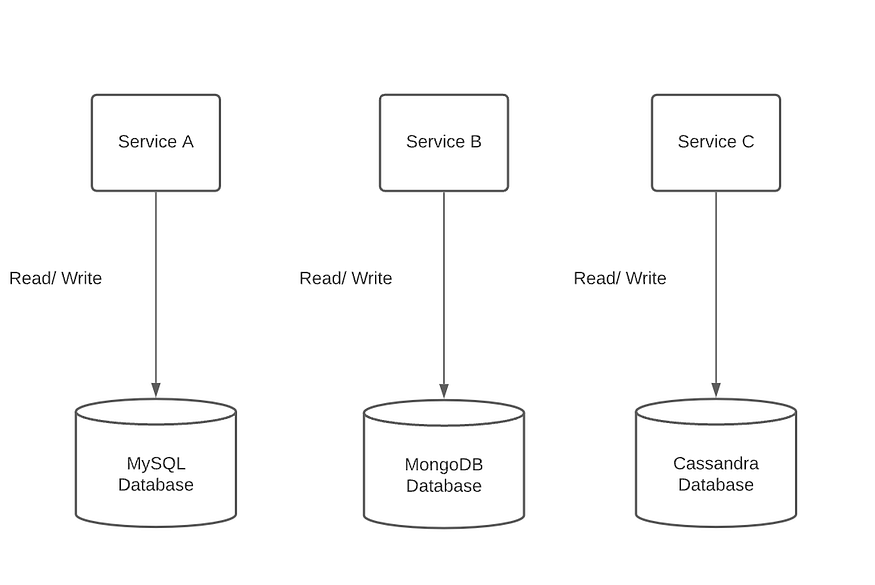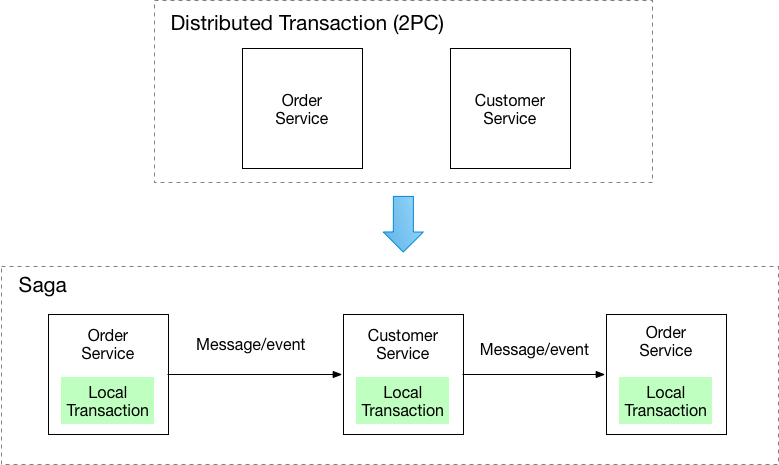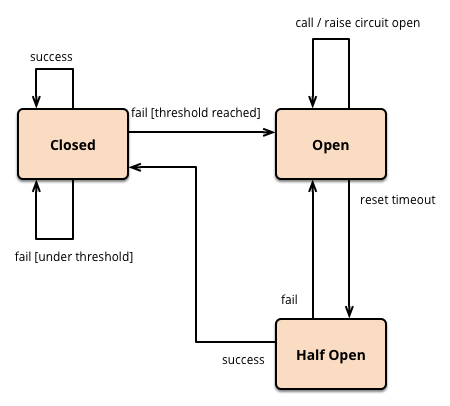10 Microservices Design Patterns for a Robust Architecture
Historically, developers relied on monolithic architecture for an extended period, and it served its purpose well. However, monolithic architectures posed challenges due to their reliance on fewer, larger components, increasing the risk of total failure if any single part malfunctioned. Often, these applications operated as a single process, exacerbating the problem.
Microservices offer a solution to these challenges by running each service as a separate process. If one component fails, it doesn't necessarily bring down the entire system. Additionally, troubleshooting and resolving issues in smaller, more cohesive services are typically easier compared to monolithic architectures.
Microservices design patterns offer established building blocks that streamline the development process for microservices. By leveraging these patterns, developers save time and ensure a higher level of accuracy compared to starting from scratch. In this article, we present a comprehensive overview of 10 essential microservices design patterns and their appropriate applications.
Key benefits of using microservices design patterns
Understanding the key benefits of microservices is crucial for comprehending the design patterns associated with them. While the specific advantages may vary depending on the microservices and applications involved, developers and software engineers can generally expect the following benefits when utilizing microservices design patterns:
Independently Deployable Architecture: Microservices allow for the creation of an application architecture where each service can be deployed independently, facilitating decentralized development and deployment.
Massive Scalability: Microservices architecture offers significant scalability advantages, enabling seamless scaling up or down based on demand without impacting the entire system.
Incremental Version Rollout: New versions of microservices can be rolled out incrementally, reducing downtime and enabling gradual updates without disrupting the entire application.
Early Detection of Issues: Microservices design patterns facilitate the detection of unwanted behavior before fully replacing an old application version, ensuring smoother transitions and minimizing risks.
Polyglot Programming: Microservices architecture allows for the use of multiple coding languages and technologies, empowering developers to choose the most suitable tools for each service's specific requirements.
Fault Isolation: Microservices help prevent systemic failures by isolating issues to individual components, limiting the impact of failures and enhancing overall system resilience.
Real-Time Load Balancing: Microservices architecture enables real-time load balancing, ensuring optimal performance and resource utilization across services to meet varying demand levels efficiently.
Understanding these benefits empowers developers to leverage microservices design patterns effectively, driving the development of scalable, resilient, and maintainable software systems.
1. Database per service pattern
Indeed, the database per service pattern is a critical consideration in microservices architecture, yet it's often overlooked by developers. How databases are organized profoundly impacts application efficiency and complexity. When determining the organizational architecture of an application, developers typically have several options, including:
Dedicated Database for Each Service:
In this approach, each service has its own dedicated database that isn't accessible by other services. This isolation simplifies scalability and enhances understanding of the system from an end-to-end business perspective.
Consider a scenario where different services have varying database needs or access requirements. For instance, one service may predominantly use relational data, while another might benefit from a NoSQL solution, and yet another may require a vector database. In such cases, employing dedicated databases for each service facilitates easier management.
Furthermore, this structure reduces coupling between services, as each service communicates solely through published interfaces. However, it necessitates implementing failure protection mechanisms to handle communication failures between services.

- Single database shared by all services:
While not the typical approach in microservices architecture, using a single shared database among all services is worth considering as an alternative. However, it's essential to acknowledge that this setup may sacrifice many of the benefits that developers expect from microservices, such as scalability, robustness, and independence.
Nevertheless, there are scenarios where sharing a physical database is suitable. In such cases, it's crucial to enforce logical boundaries within the shared database. For instance, each service should have its own schema, and read/write access should be restricted to prevent services from accessing data outside their domain. This ensures that services maintain autonomy and do not interfere with each other's data.
2. Saga pattern
A saga is indeed a series of local transactions, and in microservices applications, the saga pattern plays a crucial role in maintaining data consistency during distributed transactions.
Unlike some other design patterns, the saga pattern offers an alternative solution that facilitates multiple transactions by providing rollback opportunities. This approach ensures that even in complex distributed environments, where transactions span across multiple services, data consistency is preserved, and the system remains reliable and robust.

In a typical scenario like an e-commerce application where customers can purchase products using credit, data might be stored in two separate databases: one for orders and another for customers. It's crucial to ensure that the purchase amount doesn't exceed the customer's credit limit. To implement the Saga pattern in such a scenario, developers commonly choose between two approaches:
Choreography-Based Saga:
In this approach, each service involved in the transaction (such as placing an order and updating the customer's credit) emits events to notify other services of its actions.
Each service subscribes to relevant events and triggers its own local transaction based on these events.
If an error occurs at any step, compensating transactions are executed to rollback the changes made by previous steps, ensuring data consistency.
Orchestration-Based Saga:
In this approach, there is a central orchestrator service responsible for coordinating the sequence of actions across multiple services.
The orchestrator sends commands to various services to initiate their respective local transactions.
It waits for responses from these services and decides the next steps based on the responses received.
If an error occurs, the orchestrator can issue compensating commands to revert the changes made by previous steps, maintaining data consistency.
Both approaches have their pros and cons, and the choice between them depends on factors such as the complexity of the transaction, the level of coordination required, and the existing architecture of the system.
3. API gateway pattern
Implementing an API gateway pattern is a compelling choice for large applications with multiple clients due to several significant benefits. One of the primary advantages is that it shields the client from needing to understand how services are partitioned. This abstraction allows service boundaries to evolve independently without impacting the client.
Moreover, the API gateway pattern provides a single entry point for a group of microservices, acting as a reverse proxy between client applications and services. Clients are relieved from the burden of finding or communicating with numerous services, simplifying the client-server interaction.
Furthermore, specialized gateways tailored for specific types of clients, such as backends for frontends, enhance usability by reducing the number of roundtrips needed to fetch data. Additionally, an API gateway can handle essential tasks like authentication, SSL termination, and caching, thereby enhancing security and user-friendliness.
Another crucial advantage of the API gateway pattern is its contribution to improved security by reducing the attack surface area. By consolidating access through a single entry point, the API endpoints are shielded from direct exposure to clients, facilitating efficient implementation of authorization and SSL protocols.
Furthermore, developers can utilize this design pattern to decouple internal microservices from client applications, enabling partial request handling in case of a service failure. This ensures that the failure of a single microservice does not result in the entire request failing. In such scenarios, the API gateway can leverage caching mechanisms to provide an empty response or return a valid error code, maintaining the integrity of the application's functionality.
4. Aggregator design pattern
The aggregator design pattern serves the purpose of gathering data fragments from multiple microservices and consolidating them into an aggregate for further processing. While sharing similarities with the backend-for-frontend (BFF) design pattern, the aggregator pattern is more generic and not solely intended for user interface (UI) purposes.
In practice, the aggregator pattern functions by receiving a request and dispatching corresponding requests to multiple services, as dictated by the assigned tasks. Upon receiving responses from all involved services, this design pattern merges the results and generates a response to the initial request. This orchestration process ensures that the necessary data from various microservices is aggregated efficiently, facilitating streamlined processing and comprehensive response generation.
5. Circuit breaker design pattern
The circuit breaker pattern is typically employed between services communicating synchronously. Developers often opt for this pattern when a service exhibits high latency or becomes unresponsive. Its utility lies in preventing failures across multiple systems when a single microservice experiences issues. By preventing calls from accumulating and consuming system resources, the circuit breaker pattern helps avoid significant delays or a cascade of service failures within the application.
Implementing the circuit breaker pattern involves a function designed to monitor failure conditions. When a failure threshold is surpassed, the circuit breaker "trips." Subsequently, all calls to the circuit breaker result in errors and are redirected to an alternative service. Alternatively, calls may return a default error message.
Developers should understand the three states of the circuit breaker pattern:
Open: In the open state, the circuit breaker has exceeded the failure threshold. In this state, calls to the microservice yield errors without executing the desired function.
Closed: The closed state is the default state of the circuit breaker, where all calls are responded to normally. Ideally, developers aim to keep the circuit breaker in this state.
Half-open: In the half-open state, the circuit breaker is probing for underlying issues. While some calls may be handled normally, others may not, depending on the reason for transitioning to this state initially.

6. Command query responsibility segregation (CQRS)
A developer might opt for the Command Query Responsibility Segregation (CQRS) design pattern to address traditional database issues such as the risk of data contention. Additionally, CQRS proves beneficial in scenarios where application performance and security requirements are complex, and objects are exposed to both reading and writing transactions.
The essence of CQRS lies in its separation of concerns between commands, responsible for altering the state of entities, and queries, which retrieve data. By providing multiple views for query purposes, CQRS enables optimization of the read side of the system independently from the write side. This segregation reduces the complexity of applications by decoupling querying models and commands. Here's how it works:
The write side of the model handles persistence events and serves as a data source for the read side.
The read side of the model generates highly denormalized views known as projections of the data.
This clear separation of responsibilities allows for improved scalability, flexibility, and performance, as each side can be optimized independently based on its specific requirements and workload.
7. Asynchronous messaging
When a service doesn't require a response and can proceed with its code execution post-failure, asynchronous messaging comes into play. This design pattern, sometimes referred to as event-driven communication, enables microservices to interact in a fast and responsive manner.
To achieve optimal speed and responsiveness, developers often employ a message queue, leveraging its efficiency to minimize response delays. By utilizing async communication, microservices can establish connections without introducing dependencies or tightly coupling them. Despite the trade-offs, such as eventual consistency, async communication remains a flexible and scalable approach to designing a microservices architecture.
8. Event sourcing
The event sourcing design pattern proves invaluable in microservices architecture when developers aim to capture every change in an entity's state. Leveraging event stores like Kafka or similar alternatives aids in tracking event changes and can even serve as a message broker. A message broker plays a pivotal role in facilitating communication between various microservices, overseeing messages, and ensuring reliable and stable communication channels.
In the event sourcing pattern, a series of state-changing events are stored, enabling the reconstruction of the current state by replaying the occurrences of an entity. This approach is particularly advantageous in microservices environments where transactions are critical to application integrity. Additionally, event sourcing is beneficial when avoiding changes to the existing data layer codebase is desirable.
9. Strangler
The strangler design pattern is primarily utilized by developers for the gradual transformation of a monolithic application into microservices. This process involves systematically replacing old functionalities with new services, hence earning the pattern its distinctive name. As the new service becomes ready for deployment, the old service is gradually phased out or "strangled," allowing the new service to assume control.
To execute this transition effectively, developers employ a facade interface, which serves as an intermediary to expose individual services and functions. By extracting targeted functions from the monolith, developers can systematically "strangle" and replace them with microservices.
To grasp the significance of this pattern, it's essential to comprehend the differences between monolithic applications and microservices architectures.
10. Decomposition patterns
Decomposition design patterns are instrumental in breaking down monolithic applications into smaller, more manageable microservices. Developers typically employ one of three approaches to achieve this:
Layer Decomposition: In this approach, the monolithic application is divided into layers, such as presentation, business logic, and data access layers. Each layer is then encapsulated within its own microservice, allowing for independent development, scaling, and deployment.
Domain Decomposition: This strategy involves identifying distinct domains within the monolithic application and decomposing them into individual microservices based on domain boundaries. Each microservice is responsible for a specific domain or business capability, ensuring better separation of concerns and flexibility in development.
Functional Decomposition: In functional decomposition, the monolithic application's functionalities are broken down into smaller, more specialized functions, which are then encapsulated within separate microservices. This approach enables finer-grained control over individual functionalities and promotes code reusability and maintainability.
By employing decomposition design patterns, developers can effectively transition from monolithic architectures to microservices, resulting in more modular, scalable, and maintainable systems.
Conclude
Design patterns play a crucial role in making organizational microservice architectures more manageable. By implementing these patterns effectively, organizations can streamline their development processes, enhance scalability, and improve overall system reliability. Here's how design patterns contribute to creating a successful microservice workflow:
Standardization: Design patterns provide standardized solutions to common architectural challenges. By adopting established patterns, teams can ensure consistency across microservices, making it easier to understand, maintain, and scale the system.
Modularity: Design patterns promote modularity by encapsulating specific functionalities within individual microservices. This modular approach allows teams to develop, test, and deploy microservices independently, reducing dependencies and facilitating parallel development efforts.
Scalability: Certain design patterns, such as the Database per Service pattern or the Saga pattern, are specifically aimed at enhancing scalability. By distributing data and workload across multiple services, organizations can scale their applications more effectively to handle increasing user demands.
Resilience: Patterns like the Circuit Breaker and Retry patterns contribute to building resilient microservices architectures. By incorporating fault tolerance mechanisms, organizations can mitigate the impact of failures and ensure continuous operation, even in the face of transient errors or service disruptions.
Flexibility: Design patterns enable organizations to adapt to changing requirements and evolving business needs. By modularizing functionalities and establishing clear communication protocols between microservices, teams can easily introduce new features, refactor existing ones, or replace components without causing disruptions to the entire system.
In summary, leveraging design patterns in microservices architecture allows organizations to establish robust, functional workflows that promote scalability, resilience, and flexibility. By adopting these patterns and continuously refining their implementation based on best practices, organizations can build and maintain successful microservices-based applications.